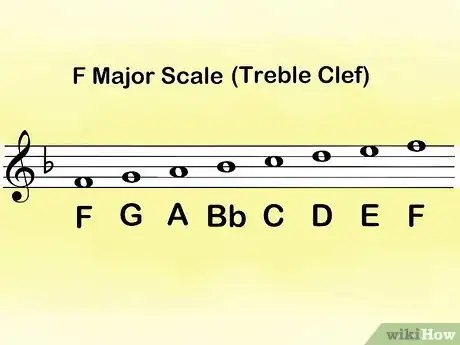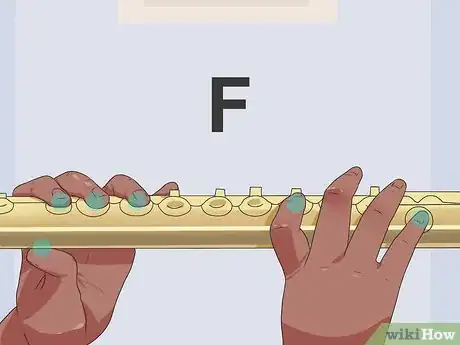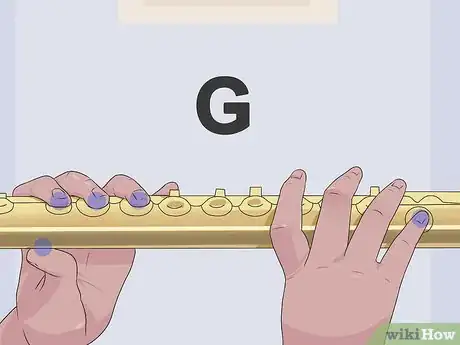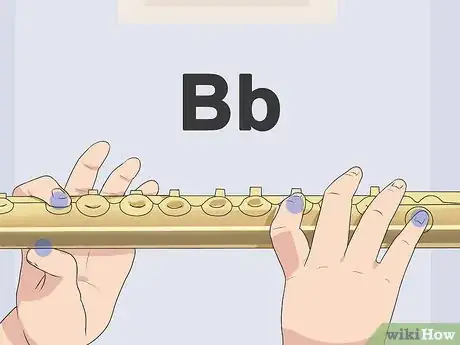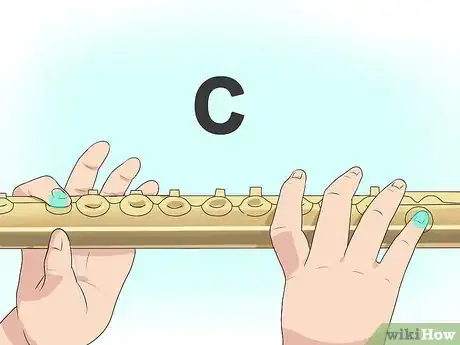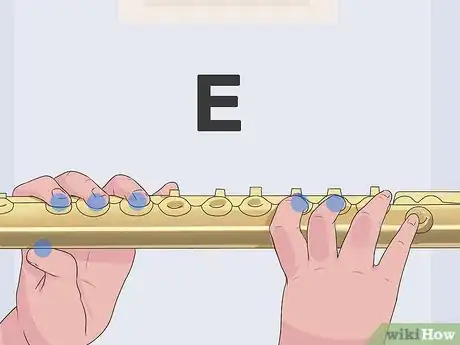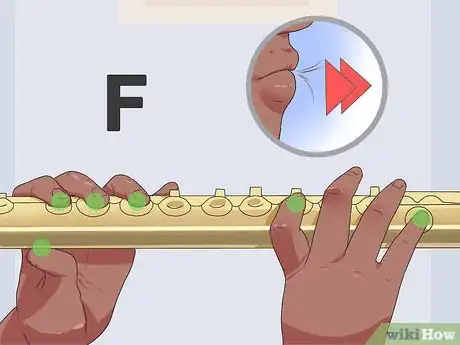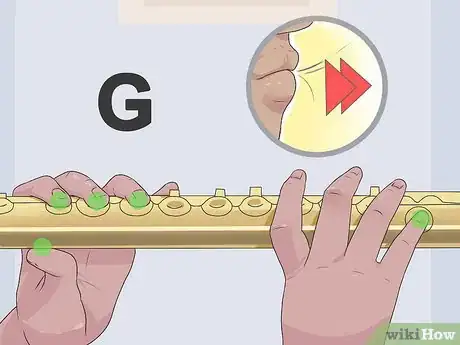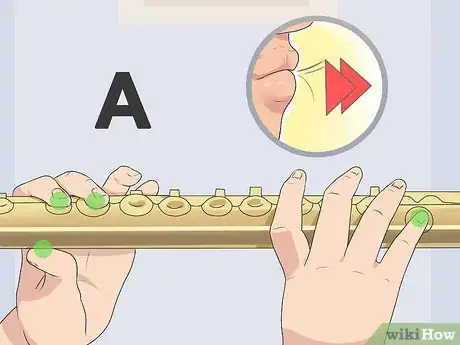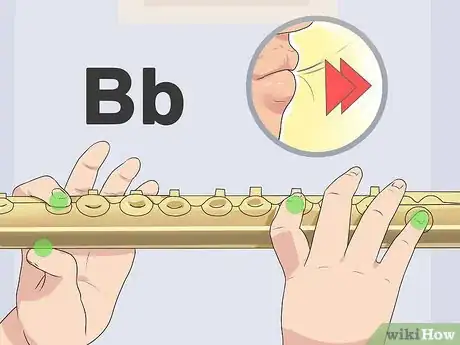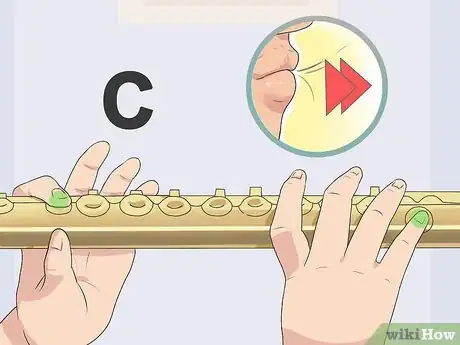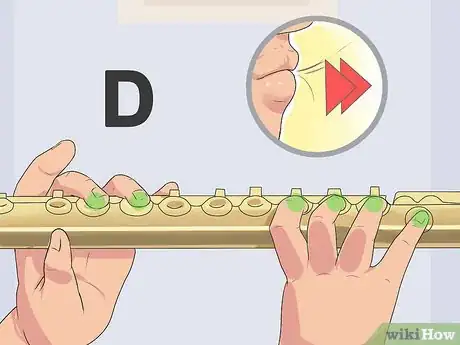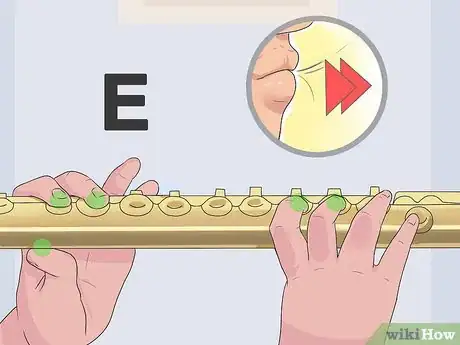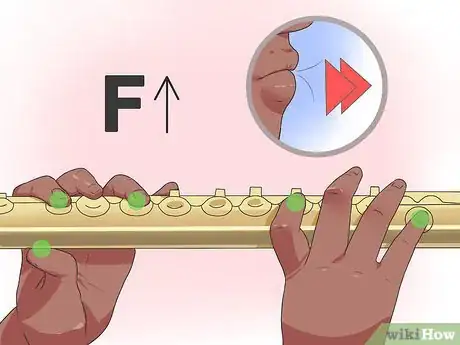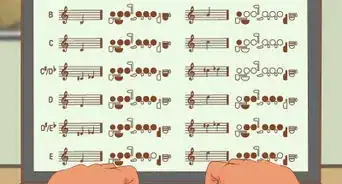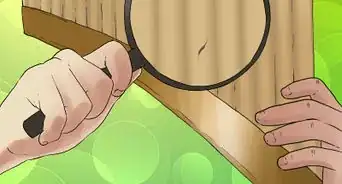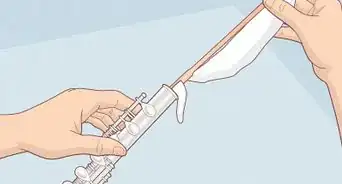X
wikiHow is a “wiki,” similar to Wikipedia, which means that many of our articles are co-written by multiple authors. To create this article, 18 people, some anonymous, worked to edit and improve it over time.
This article has been viewed 52,219 times.
Learn more...
To truly understand scales, you must be able to play them in a harmonic way. Wait one second, how do you play one? Don't worry! This article will exactly tell you how. In a few days, you will be able to play the scales very well!
Steps
Part 1
Part 1 of 2:
The Lower Octave
-
1Understand the order of the notes. The pattern of a major scales is a whole step, whole step, half step, whole step, whole step, whole step, and half step. The F major scale notes are F, G, A, B-flat, C, D, E, then F(high) again. You can play this as two octaves but start with the first octave, the lower one.
-
2Start with the fingering of the lowest F. On your left hand, have the first three fingers on (and covering the holes if you have an opened hole flute) and your left-hand thumb on your left hand. On your right hand, put down your pinky and your index finger.Advertisement
-
3Proceed to G. the fingering is the same as with F, except that you remove your right-hand index finger.
-
4Play the A. The same as G except that your third finger on your left hand is up as well.
-
5Play B-flat, the only flat in the scale. Index and thumb down on your left hand and index and pinky down on your right. Make sure that your left thumb is on the lever closest to your right hand. You don't use the other one much, only in specific circumstances.
-
6Play C. Place your index finger on your left-hand pinky finger on your right.
-
7Play D. Place the second third finger and thumb on your left hand and all four digits on your right. Make sure your first finger is up for D because it only sounds barely different with it down, but it does change the pitch.
-
8Play E. Use your first, second, third fingers and thumb on your left hand, and first and second fingers on your right hand
-
9Come back to F again, but this time one whole octave up. The fingering is the same, but streamline the air a little more and blow it faster over the mouthpiece.
Advertisement
Part 2
Part 2 of 2:
The Second Octave
-
1Play higher. The notes are the same as above, just you play them one octave up. Most of them have the same fingering but a few of them are different. If it is the same, the step will mention "look above", in reference to the first part above. The F that you start with is the same one that ended the last scale in Part 1.
-
2Play G. This is fingered the same and will be just one octave up. Look above.
-
3Play A. This is also the same fingering. Look above.
-
4Play B-flat. This is the same, look above.
-
5Play C. This is the same, look above.
-
6Play D. This is the second and third fingers and thumb on your left hand and the pinky on your right hand. It can be made using the aforementioned fingering for D but it is hard to do and almost never in tune.
-
7Play E. Make sure that you blow enough air for this E. It can be difficult to master. The fingering is the first two fingers and thumb on your left hand and the first two fingers on your right hand and no pinky.
-
8Play F. This is fingered as for the other F except that the second finger on your left hand is up. Like the D, you can play this as a normal F but it is easier to do with this finger up, and typically more in tune.
Advertisement
Community Q&A
-
QuestionWhenever I'm playing the F scale, I have trouble making my high E sound good. What should I do?
 Community AnswerKeep a really fast air stream. Keep a good embouchure, and don't close your throat. Try adjusting your air stream and the shape of your mouth until you get it out well. Then memorize how your mouth feels when you play it. Tuning your instrument may also help.
Community AnswerKeep a really fast air stream. Keep a good embouchure, and don't close your throat. Try adjusting your air stream and the shape of your mouth until you get it out well. Then memorize how your mouth feels when you play it. Tuning your instrument may also help. -
QuestionI keep getting confused with the notes. Is it OK to put on stickers to color code each note?Of course! You can do whatever you want to help you remember all the notes.
-
QuestionWhat is the second octave? I don't understand.
 Community AnswerThe second octave means the higher notes you play, such as a high B rather than a low B.
Community AnswerThe second octave means the higher notes you play, such as a high B rather than a low B.
Advertisement
About This Article
Advertisement
